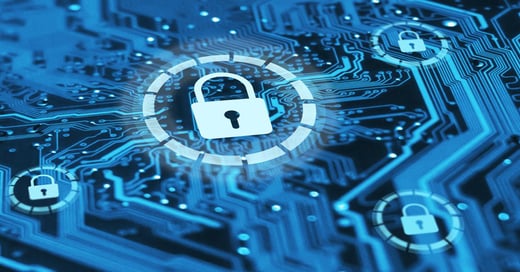Everybody loves a flashy tool.
With AI-frenzy sweeping the industry, the already-excessive hype of the cybersecurity industry has gone into overdrive. Every vendor in sight is talking endlessly about how generative AI and automation will “change the game” for cybersecurity teams.
But the truth is… none of that matters if you don’t have a controlled IT environment.
That’s where system hardening comes in.
What is System Hardening?
Most digital assets come in an unconfigured state.
By default, everything is enabled—all services turned on, all ports open, and so on. This is great for usability, but terrible for security. To make matters worse, assets often aren’t fully up-to-date, either. They may require several software and firmware updates before they are ready (and safe) to use.
Why does this matter? Because poorly configured and out-of-date IT assets are among the easiest and fastest entry points for malicious actors, making system hardening a necessity.
System hardening is the process of reducing an asset’s vulnerability to cyber threats by configuring it in line with security best practices. Done properly, it includes:
- Installing all the latest software and firmware patches.
- Disabling unnecessary services, user accounts, and ports.
- Changing default credentials and account information.
- Maintaining configuration settings in line with a best practice framework.
By making (and enforcing) these changes to every asset, an organization can dramatically reduce the risk of serious security incidents and breaches.
What is the Purpose of System Hardening?
The purpose of system hardening is simple: to reduce each asset’s attack surface.
NIST defines attack surface as:
“The set of points on the boundary of a system, a system element, or an environment where an attacker can try to enter, cause an effect on, or extract data from.”
An asset’s attack surface amounts to the sum of vulnerabilities, entry points, and methods an attacker could use to compromise it. An organization’s attack surface is the sum of those same vectors across all its assets and IT infrastructure.
The smaller an asset’s attack surface—the fewer entry points it has—the harder it is to compromise.
Benefits of System Hardening
System hardening is an essential part of any cybersecurity program. Enforcing secure configuration management across an IT environment is a fundamental first step in protecting IT and information assets—without it, no amount of spending on fancy tools will meaningfully reduce cyber risk.
Organizations Use System Hardening to:
- Build and maintain a best practice security profile.
- Eliminate insecure configuration settings.
- Protect the organization from known threats.
- Offload unnecessary cyber risk by narrowing the attack surface.
At the same time, system hardening is mandated by all major compliance frameworks. For example, PCI-DSS requirement 2.2 requires organizations to: “[...] develop configuration standards for all system components. Assure that these standards address all known security vulnerabilities and are consistent with security accepted system hardening standards.”
Accepted system hardening standards include CIS Benchmarks and DISA STIGs, which we’ll cover in more detail in a moment. All major compliance frameworks, including PCI-DSS, HIPAA, and FedRAMP, point to these frameworks as accepted best practices for system hardening. If your organization needs to be compliant with one or more frameworks, adhering to one of them is essential.
System Hardening Standards (NIST, CIS, and DISA)
Trying to manually determine the most secure configuration for every asset is a highway to nowhere.
Operating systems and other IT assets are often highly customizable, with thousands of ports, services, and settings to configure. If organizations had to determine the ideal configuration for every individual asset, it would take years to build a secure environment. That’s why most organizations opt to follow system hardening best practices in the form of a recognized standard.
To help you identify and maintain the configuration settings needed for a hardened attack surface, several organizations provide system hardening standards. These include the National Institute for Standards and Technology (NIST) system hardening checklists, CIS Benchmarks, and DISA STIGs.
NIST also maintains Special Publication 800-70, its checklist program for IT products.
These standards provide best-practice security configuration guides for a wide range of common IT assets, including operating systems, cloud environments, network devices, servers, and more.
While useful, the NIST publication and checklists have a slightly different purpose and audience. For most organizations, choosing a system hardening standard comes down to CIS Benchmarks vs. DISA STIGs. To help you choose between them, the next section provides a breakdown of the two standards, how they’re structured, and who they are intended for.
Automate System Hardening with CimTrak
CimTrak is the industry’s only genuine Next Generation File Integrity Monitoring tool—and a game-changer for automating essential system hardening functions.
It provides a complete IT integrity, security, and compliance toolset that automates the system hardening process—identifying non-compliance issues in real-time and preventing or rolling back changes that would lead to insecure configuration.
CimTrak continually scans your environment and assesses current asset configuration against CIS Benchmarks or DISA STIGs. When it identifies a misconfiguration, CimTrak either blocks or rolls back the change automatically or raises an alert and provides clear guidance on how to re-establish compliance.
This makes it easy for organizations to:
- Assess the current hardness of systems and assets. Continuous scanning provides a real-time snapshot of configuration vs. best practice.
- Instantly identify misconfigurations and non-compliance. Ensures continuous compliance and removes the need for manual assessments.
- Ensure systems remain ‘hard’ at all times. By identifying and rolling back non-compliance issues, CimTrak continuously minimizes your organization’s attack surface.
CimTrak customers include banks, global technology companies, critical infrastructure providers, and other organizations that absolutely must have a hardened attack surface at all times.
To see a free, instant preview of CimTrak—with no email signup required—click here.
Tags:
System Hardening
August 3, 2023




